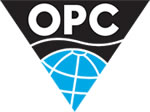Middle East / Africa
Country profile: Tunisia
| Location: |
Northern Africa, bordering the Mediterranean Sea, between Algeria and Libya |
| Climate: |
temperate in north with mild, rainy winters and hot, dry summers; desert in south |
| Terrain: |
mountains in north; hot, dry central plain; semiarid south merges into the Sahara |
| Size: |
163610 sq. km total (Land area: 155360 sq. km Water area: 8250 sq.km) |
| Population: |
10,383,577 (July 2008 est.) |
| Languages: |
Arabic (official and one of the languages of commerce), French (commerce) |
| Government: |
republic |
| Capital city: |
Tunis |
| Legal system: |
based on French civil law system and Islamic law; some judicial review of legislative acts in the Supreme Court in joint session; has not accepted compulsory ICJ jurisdiction |
| Currency: |
Tunisian dinar (TND) |
| Licensing: |
|
Country profile
Tunisia’s economic growth primarily comes from oil, agriculture and tourism. Tunisia is a North-African country that gained its independence from France in 1956. In 2004, Tunisia re-elected President Zine al-Abedine Ben Ali to his fourth, five-year term. The Tunisian parliament made the fourth term possible after passing a new constitution in April 2002. In addition to economic reforms, President Ben Ali has pursued a process of democratization, legalized political opposition parties and guaranteed them 20 percent of parliamentary seats. Critics note, however, that substantial progress can still be made in areas including freedom of press, human rights, and separation of powers.
In 2005, Tunisia experienced slightly slower real gross domestic product (GDP) growth (4.0 percent), than the previous four years (2000 – 2004), which averaged 4.6 percent growth. Industry analysts attribute the slower growth to a slowdown in the agriculture and fishing industries during 2005. However, industry analysts are expecting a revival of the tourism industry to bolster GDP growth in 2006, increasing it to 5.8 percent.
Tunisia has traditionally maintained high tariffs to protect domestic industries. The International Monetary Fund (IMF) has urged that these tariffs be reduced as part of Tunisia's "second-generation reforms." Many tariffs were lowered with regards to Europe as part of Tunisia's 1995 association agreement with European Union, which came into force in 1998. In addition to integrating its economy with that of Europe, Tunisia has pursued closer relations with its North African neighbors. In May 2001, Egypt, Jordan, Morocco and Tunisia agreed to set up a free trade zone ahead of the 2010 target for trade barriers to end in the Euro-Mediterranean area. The Great Arab Free Trade Zone is expected to eventually encompass 10 Arab nations.
Privatization of Tunisia's state-owned enterprises (SOEs) is moving ahead slowly. Since 1987, around 160 SOEs have been at least partially privatized. In the long run, Tunisia sees privatization as a way of creating jobs by making its economic climate more attractive to investors. Tunisia's unemployment rate remains at high levels (officially 14 percent, but likely higher). As close to 55 percent of the work force is under the age of 25, significant job creation is needed.
Tunisia has to import oil in order to satisfy consumption demand.
As estimated by OGJ, Tunisia had modest proven oil reserves of 308 million barrels as of January 2006. The majority of Tunisia's oil reserves are located in the Gulf of Gabes and the Ghadames Basin in the southern part of the country. In 2005, Tunisia produced around 75,000 barrels per day (bbl/d) of crude oil. This represents a 37 percent decline from Tunisia’s peak output of 120,000 bbl/d between 1982 and 1984. Currently, the country's domestic oil production capacity cannot meet the country's consumption demand, which in 2005, was 94,000 bbl/d. Tunisia should to be able to supply at least part of its own petroleum needs for the next decade, but significant production thereafter will be contingent upon new discoveries.
Sector Organization
The Tunisian government created the country’s state-owned oil company, Enterprises Tunisienne d'Activités Petrolières (ETAP), in 1972. ETAP’s mission is to manage the oil and natural gas exploration and production activities for the Tunisian government. ETAP has worked to attract foreign firms to fund oil exploration, particularly of the country's smaller fields. To help achieve this, Tunisia reformed its hydrocarbons laws in August 2000. One of the most important provisions of the new laws for foreign firms is a reduction in the tax rate from 75 percent to 50 percent if ETAP takes a 40 percent share of the concession. To date, ETAP has granted a total of 44 exploration licenses to 42 international and domestic companies that operate in the country.
In addition to granting domestic exploration licenses, ETAP is pursuing overseas exploration and production. The company is working in Syria with Preussag of Germany to develop small oilfields and has signed an oil cooperation agreement with Iraq. In December 2004, the Syrian and Tunisian governments signed an agreement to explore for oil in northeastern Syria. ETAP also has joint venture agreements with Sonatrach of Algeria and Libya's National Oil Company.
Production
The majority of Tunisia’s oil production (73 percent) comes from six concessions, which include Adam, Ashtart, Didon, El Borma, Miskar and Oued Zar. The remaining production comes from 26 smaller concessions. In 2005, Adam field, located in the Borj el Khadra prospect in Ghadames basin, became Tunisia's largest producing oilfield at 18,000 bbl/d. The Borj el Khadra prospect is operated by Agip, with partners Pioneer Natural Resources, Paldin Resources and ETAP. The onshore El Borma oilfield, which Agip discovered in 1964 near the Algerian border, produces around 12,000 bbl/d. This production level is down from the 1985 peak of 70,000 bbl/d. Ashtart field, which is operated by ETAP, produces around 11,500 bbl/d.
In addition to Tunisia’s producing oil fields, foreign and domestic operators are continuing to explore and develop new hydrocarbon discoveries in the country. A partnership between a Tunisian and a Kuwaiti oil firm is drilling an offshore well with expected reserves of 6 million barrels of oil. Sweden's PA Resources (PAR) is involved in development and exploration in the Douleb field, the Zarat concession and the Tamesmida field and Sweden's Lundin Petroleum operates a number of offshore fields - notably, the Isis and Oudna fields. In February 2004, Tunisian independent HBS Oil Company announced an oil discovery on Djerba Island. Petroceltic announced in December 2004 that it had struck both oil and gas at its Sidi Toui 3 well in the Ksar Hadada Block in southern Tunisia. In April 2005, the U.A.E.'s Mabdallah Saad al-Thani Corporation announced a five-year exploration agreement with ETAP for the El Jem block, while U.S.-based Rigo Oil Company announced an exploration agreement for the Tozeur-Sud block. In February 2006, Tunisia awarded Petro Canada and Anadarko 2-year, production sharing agreements (PSAs) with ETAP for the Cape Sirat and Bashtar blocks.
In February 2006, a 35-year-old oil exploration dispute between Tunisia and Malta came to a close. The two countries signed an agreement that provides for joint oil development of the continental shelf between Malta and Tunisia. The ministers who signed the agreement are hopeful of finding oil in the continental shelf area, which is located near the Tunisian Isis field and Libya’s offshore Bouari field.
Refining and Downstream
Tunisia's only refinery at Bizerte, operated by government-owned Société Tunisienne des Industries de Raffinage (STIR), has a production capacity of 34,000 bbl/d. Plans proposed in the early 1980s to double the capacity of the refinery have been dropped. Because of its relative lack of refining capabilities, Tunisia exports crude oil and imports refined products. In December 2005, the Tunisian Ministry of Industry and Energy opened bidding to private companies on a project to build a new refinery at La Skhirra. Ideally, the refinery would have a minimum capacity of 120,000 bbl/d, be built on a build-own-operate basis adjacent to the La Skhirra oil terminal and begin operations in 2010. The ministry plans to award the project by June 2007.
Tunisia has five oil export terminals on the Mediterranean coast. The largest of these is La Skhirra, on the Gulf of Gabes. A 22,000-bbl/d, 78-mile pipeline between the Sidi El Kilani oilfield and La Skhirra was inaugurated in March 2001. La Skhirra also handles about 22 percent of Algeria's oil exports. It is linked to the Illizi Basin oilfields in southern Algeria by a 480-mile pipeline. Other Tunisian oil terminals include Gabes, Zarzis, Bizerte and the Ashtart offshore terminal.
Tunisia is increasingly looking to natural gas to satisfy the country’s energy needs. Natural Gas
Tunisia is increasingly turning to natural gas to meet domestic energy demand. The state-owned natural gas and electricity company, Société Tunisienne de l’Electricité et du Gaz (STEG) has promoted the use of natural gas through an incentive system that began in 2005. According to STEG, natural gas represented 44 percent of the total initial energy consumption in Tunisia in 2005, compared to just 14 percent in 2003. OGJ estimates that in January 2006, Tunisia had 2.75 trillion cubic feet (Tcf) of proven natural gas reserves. Around two-thirds of the reserves are located offshore. In 2003, Tunisia produced 76 billion cubic feet (Bcf) of natural gas, while consuming 136 Bcf of natural gas during that same year.
The majority of Tunisia's natural gas output comes from Miskar field, located about 80 miles offshore in the Gulf of Gabes. The field was discovered in 1975 by Elf, but is now fully owned and operated by British Gas (BG) , the largest investor in Tunisia's energy sector. According to BG, the field contains 1.5 Tcf of natural gas reserves. In 2005, Miskar field achieved record production levels of 200 million cubic feet per day (MMcf/d) of natural gas, which supplied more than 50 percent of Tunisia's total natural gas demand. In collaboration with the Tunisian government, BG has installed new offshore compression equipment in order to expand the output of the Miskar field. BG has a Miskar natural gas sales contract with STEG, giving it the right to supply at least 230 MMcf/d on a long-term basis.
BG also holds the Amilcar and Ulysse exploration permits in the Gulf of Gabes. BG is looking to develop the Hasdrubal oil and natural gas field, which is located in the Amilcar permit. The company has indicated that the Tunisian government is close to finalizing a $600 million plan to develop the Hasdrubal field. BG is planning on bringing the Hasdrubal natural gas and gas condensate field onstream by 2009, with gross output of 30,000 bbl/d of oil equivalent. In 2007, BG intends to complete a drilling program in the Ulysse exploration permit area, also located in the Gulf of Gabes.
Tunisia has four other producing natural gas fields (El Franning, El Borma, Baguel, and Zinnia). Together, these fields account for most of the remaining domestic natural gas production.
Trans-Mediterranean Pipeline
The 20-year-old Trans-Mediterranean (TransMed) pipeline, with 1,300-Bcf-per-year-capacity, transports Algerian natural gas to Sicily, crossing the Mediterranean from Cap Bon. Tunisia receives royalties (5.25 - 6.75 percent value of the natural gas, in cash or in kind) from the pipeline as payment for access through its territory. In May 2005, Agip, which operates the TransMed pipeline along with Algeria's Sonatrach, agreed to expand the capacity of the Tunisian section of the pipeline by 113 Bcf/year by 2008. In a second expansion to be completed by 2012, the capacity of the Tunisian section will be increased by an additional 117 Bcf/year, bringing total capacity to a maximum of 1,183 Bcf/year.
Energy production and consumption
|
Oil |
Gas |
| Production: |
76,900 bbl/day (2005 est.) |
2 billion cu m (2005 est.) |
| Consumption: |
90,000 bbl/day (2005 est.) |
4 billion cu m (2005 est.) |
| Exports: |
75,060 bbl/day (2005 est.) |
|
| Imports: |
85,680 bbl/day (2005 est.) |
1 billion cu m (2005 est.) |
| Reserves: |
1 billion bbl (2007 est.) |
74 billion cu m (1 January 2006 est.) |
| Major fields: |
|
|
Tunisia - recent news
24 Mar 25
|
Tunisia: Scatec signs 25-year PPA in Tunisia for a 120 MW solar plant
Scatec, a leading renewable energy solutions provider has signed a 25-year Power Purchase Agreement (PPA) with Tunisian state utility Société Tunisienne de l’Electricité et du Gaz (STEG) for another 120 MW solar power plant (Sidi Bouzid II) in Tunisia. |
12 Aug 24
|
Tunisia: Zenith Energy provides update on Tunisian production portfolio
Zenith Energy has provided an update in respect of its Tunisian onshore oil production portfolio comprised of the Robbana and El Bibane concessions, both wholly owned by a subsidiary of the Company. |
06 Aug 24
|
Tunisia: EBRD promotes renewable energy in Tunisia
The European Bank for Reconstruction and Development (EBRD) and the French development agency, Proparco, are promoting the green transition of Tunisia by financing the construction and operation of two solar photovoltaic power plants in the areas of Tozeur and Sidi Bouzid. |
05 Aug 24
|
Tunisia: Scatec and Aeolus, part of Toyota Tsusho Group, join forces for Tunisia solar projects
Scatec, a leading renewable energy provider, and Aeolus, part of the Japanese conglomerate Toyota Tsusho Group, have signed a partnership agreement to jointly develop and own renewable energy projects in Tunisia. In parallel, financial close has been achieved for the 120 MW Sidi Bouzid and Tozeur solar projects (each 60 MW), which are part of the partnership agreement. |
14 Jun 24
|
Tunisia/Italy: EBRD finances Tunisia-Italy 600 MW ELMED electricity interconnector
The European Bank for Reconstruction and Development (EBRD) is providing a €45 million financing package to Société Tunisienne de l’Electricité et du Gaz (STEG) to support the energy transition and the decarbonisation of Tunisia’s energy sector. |
Tunisia - more news
Other countries in this region
- Algeria,
- Angola,
- Bahrain,
- Benin,
- Botswana,
- Burundi,
- Cameroon,
- Central Africa Republic,
- Chad,
- Comoros,
- Congo (Brazzaville),
- Congo (Democratic Rep.),
- Cote d'Ivoire,
- Djibouti,
- Egypt,
- Equatorial Guinea,
- Eritrea,
- Ethiopia,
- Gabon,
- Gambia,
- Ghana,
- Guinea (Republic),
- Guinea Bissau,
- Iran,
- Iraq,
- Israel,
- Jordan,
- Kenya,
- Kuwait,
- Lebanon,
- Liberia,
- Libya,
- Madagascar,
- Malawi,
- Mali,
- Mauritania,
- Mauritius,
- Morocco,
- Mozambique,
- Namibia,
- Niger,
- Nigeria,
- Oman,
- Palestine,
- Qatar,
- Rwanda,
- Sao Tome,
- Saudi Arabia,
- Senegal,
- Seychelles,
- Sierra Leone,
- Somalia,
- Somaliland,
- South Africa,
- South Sudan,
- Sudan,
- Syria,
- Tanzania,
- Togo,
- Uganda,
- United Arab Emirates,
- Western Sahara,
- Yemen,
- Zambia,
- Zanzibar,
- Zimbabwe











